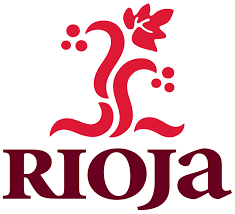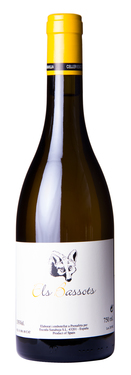A while ago I was invited to speak about Rioja at a Norwegian fair. Originally the speech should have been done by one of the big Rioja companies, and it was already sold out. After some hesitation I said that if I should speak about Rioja it would be my way, presenting my opinions, and the wines from the company the participants had submitted to would not be present.
I love Rioja, the food and the culture and the scenic landscapes, the shifting soils and the many well-managed vineyards, many of them really old. But I also think that Rioja is in serious trouble, and hopelessly out of fashion, at least out of sync with the discriminating wine lover. I am aware that I am in danger of getting myself some new enemies by saying this, and I beg for understanding. And it’s not my intention to be snobbish either, in fact I am also speaking against many wine nerds in my own country. Leonard Cohen sang “I like handsome men, but for you I will make an exception”. Many people accept Rioja as “something different”, and let the the Rioja “industry” get away with a lot of characteristics you wouldn’t have accepted from another region that claim greatness: Too much oak, that one is well known, nearly identical wines (especially in the crianza and reserva categories) in spite of coming with different labels and from different companies, the domination of cooperatives (including huge bodegas that act as such), blending of grapes from all over to make millions of liters of the same wine. The list could go on.
 Time to move on!
Time to move on!
No surprise that something like the “Artadi case” should come up, it was just a question of when. In this case the ‘death’ was ‘foretold’, and it’s difficult to see that the conflict couldn’t be solved. We ought to take a closer look at this case later, but in short it’s about Juan Carlos López de Lacalle leaving the DOC Rioja because of regulations don’t accept mention of specific vineyards nor villages on the label, and the back label only promoting the word Rioja as a brand name. It’s easy to agree with his opinions. On the other hand there are people who don’t agree with the way he acted in the process, and “who was he to do this”, after all Artadi is also a quite big company that has sold wines to supermarket brands (more specificly the Valdepomares label to Marks & Spencer). Then comes the geographical-political side of it: Many fear, and the Consejo Regulador (the wine authorities) really should, that Artadi will label their wines as Vino de Álava (or the Basque name: Araba), and that many others will follow. Then the old question will come back: Why are villages like Ábalos and San Vicente part of La Rioja, not the Araba province? Many travelers from Haro on their way to Laguardia have wondered why they’re driving in and out of that province while staying on the same road. And if I haven’t mentioned it before, the only official distinction in Rioja Alta, Baja and Alavesa… Well, it’s nothing but useless. For those not familiar with the Artadi case, here is an article where the decision to leave is announced. And for a brief introduction in English, where the Consejo also is allowed to hold the microphone for a while, look here.
Now to the tasting. In Norway one can chose among some 400 available Rioja wines, of which I have tasted most of them. Still I only managed to come up with less than 10 that fit my few and simple specifications: The viticulture should be organic, and the yeasts should be natural. One should be able to trace the wine back to a specific place, and the wine should have no disturbing trace of oak. Other than that it should only be good drinking. It’s possible that I am ignorant about wines that could have met my specifications. But the Rioja regulations and labelling doesn’t help much either, when many of them says “viña” or “pago” (words for vineyard), and it’s not. Readers of this blog will have noticed that I am no fan of huge, oaky, overextracted wines, so many of the big names were disqualified, with the result that my selection was less than half the price of the organizers’ budget. There is a group of modern growers that call themselves Rioja’n’Roll. At times in this process I felt that I could have belonged to it, and somehow I was eager to see whether I were booed out or not.
These were the wines:
Ad Libitum 2013 (Juan Carlos Sancha) – The only white wine in the selection, made from white tempranillo, a variety that was officially recognized in 2007 and that is genetically speaking 97% same as the red. Sancha owns 5 hectars in Baños de Tío Tobia in the Najerilla valley. This is among the coldest parts of the whole DOC; high-lying, southfacing vineyards (around 600 meters) on low-yielding calcareous soils.
Straw yellow. Typical aromas of gooseberries and fennel, along with some white flowers, and a slight hint of apricot. Quite full, mellow, but good fruitiness all the way.

Navarrsotillo Tempranillo 2013 – Best Buys Organic Series (Navarrsotillo) – Andosilla is in the region of Navarra, and the vineyards are in a radius of 10 kilometers from the bodega – in Andosilla, San Adrián and Calahorra (the last two over in La Rioja). The Serrano Arriezu brothers call this the “Rioja Mediterranea”). Here are cold winters, mild and wet springs and autumns, and warm and dry summers. The soil is calcareous, but also with sand, clay and stone, that gives wines with soft tannins, but can also give a freshness to the wines. This one is especially made for their Norwegian importer. Only tempranillo, spontaneously fermented and matured in inox.
Bright red. Earthy, mature fruit, herbs. Not very concentrated, but enough to reflect its origin.
LZ 2013 (Telmo Rodríguez) – From Lanciego/Lantziego, towards the east of the Alavesa road, past Laguardia, a cool zone with predominantly clay and calcareous soils. Telmo claims that Lanciego reflects the contrasting influences between the Atlantic (that is closest) and the Mediterranean (whose influence is brough up by the Ebro river). The wine is made from tempranillo, graciano and garnacha, grown “en vaso” (bush wines). For this wine there is to a lesser extent a collaboration with local growers, carrying out traditional viticulture (pre-conventional), and all the grapes were picked by hand and fermented in cement with natural yeast and aged 4-6 months in cement.
Quite dark with a violet hue. Dark berries, fennel, with notes of licorice and some balsamic, a bit earthy. Medium body, good tannin grip and a nice acidity.
Ad Libitum Maturana Tinta 2011 (Juan Carlos Sancha) – While his white wine was all tempranillo this hasn’t a drop of that grape, but in-stead the variety mentioned in the wine name, maturana tinta that originates from Rioja. Sancha is a professor of enology at the University of La Rioja. He and his collegues were instrumental in the rescue operation of this grape and others in the region (like trousseau, bastardo and red verdejo).
Dark red. Balasamic notes combined with red berry fruit. Just the right amount of tannins for good drinking now, and matching acidity.
Rayos Uva Vendimia Seleccionada 2014 (Olivier Rivière) – Rivière, from Cognac, was a consultant for Telmo Rodriguez from 2004. By then he had started to buy vineyards. He works organically, ploughs regularly, uses a minimal amount of treatments (organic too). Altitude is important for him, for freshness in the wines. This wine is made from tempranillo and graciano in equal parts (some times he puts in some garnacha) grown around 6-700 meters over sea level in the hills over Aldeanueva de Ebro. The wine was only gently macerated in inox before fermentation. He likes to ferment with stalks to achieve a wine that has a fresh feeling to it, but is nevertheless not light. After a 10 months ageing on lees, and only slightly sulphured, it was brought down to Aldeanueva to be bottled by Bodegas Lacus, where Rivière has also consulted.
Dark red. Dark fruits, blackberries, lightly balsamic (menthol). Soft tannins, a juicy, luscious feel, and just that right touch of inspiring acidity.

Predicador 2011 (Benjamín Romeo) – OK, I admit it, I decided to give something to the people who had come for a “Rioja” tasting. Predicador 2011 was made of Benjamín Romeo, formerly at Cosecheros Alaveses (eventually known as Artadi), but left for his own “garage” project in his native San Vicente de la Sonsierra, altogether 7 hectar of vines in alluvial soils, calcareaous clay and sand. When I visited him some 10 years ago it was under very humble circumstances, but with ideal storage in 800 years old underground caves. I think he was going to build a new bodega, but I don’t know if it’s done. It didn’t seem to me that impressive bodega houses are among Benjamín’s focal points. But he is a true cosechero, he makes the wines he believes in, and he has many followers these days. His Predicador white was tested, and left out, but the red (from 89% tempranillo, 10% garnacha and 1% viura) passed the test. I don’t dare to think what disaster could have happened to this wine without that 1 decisive per cent of viura…
Dark red colour. Red berries, blackberries, a touch of vanilla. A smooth velvet texture, quite full and concentrated.
6 very nice, serioius, and quaffable wines. There could have been a few more, but honestly there ought to have been many, many, many more to chose from.









